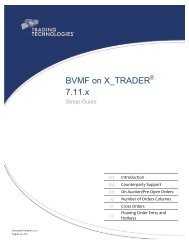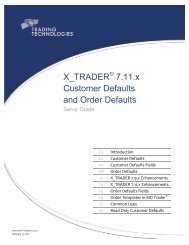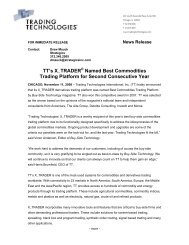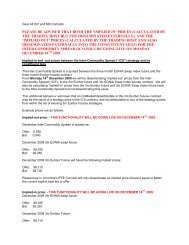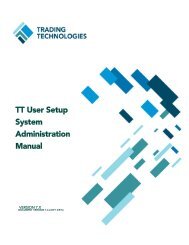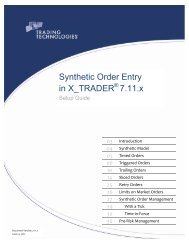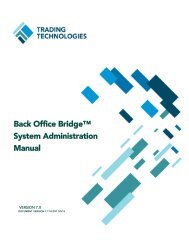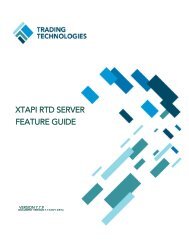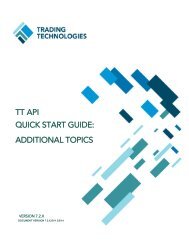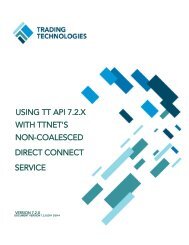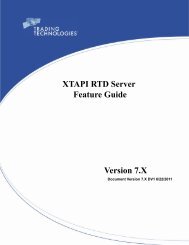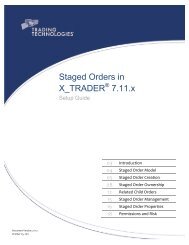Hardware and Software Requirements - Trading Technologies
Hardware and Software Requirements - Trading Technologies
Hardware and Software Requirements - Trading Technologies
Create successful ePaper yourself
Turn your PDF publications into a flip-book with our unique Google optimized e-Paper software.
Registry Settings (Windows XP)<br />
Table 1:<br />
Registry Setting TT Machine Description<br />
ArpCacheLife<br />
These are explanations of the additional NIC settings that are implemented per TT’s recommendations.<br />
ArpCacheMin-<br />
ReferencedLife<br />
Tcp1323Opts<br />
EnableTCPA<br />
EnableRSS<br />
EnableTCPChimney<br />
Server Machines,<br />
Client Machines<br />
Server Machines,<br />
Client Machines<br />
Server Machines,<br />
Remote Hosts,<br />
WAN Routers<br />
Server Machines<br />
Server Machines<br />
Server Machines<br />
This sets the timeout for unused entries in the OS ARP<br />
Cache. By default, this key does not exist but is set to<br />
two minutes. TT sets this to one (1) hour.<br />
This sets the timeout for all entries in the OS ARP<br />
Cache. By default, this key does not exist but is set to<br />
10 minutes. TT sets this to two (2) hours.<br />
This allows a TCP receive window of larger than 64k<br />
to be advertised; it will only be seen during the SYN<br />
<strong>and</strong> will show up as a Windows Scaling multiplication<br />
factor. This is used when calculating the correct TCP<br />
Receive Window for a WAN connection.<br />
This is Net DMA NetDMA <strong>and</strong> it allows for a Direct<br />
Memory Access (DMA) engine on the Peripheral<br />
Component Interconnect (PCI) bus. This does not<br />
work if RSS <strong>and</strong> TCPChimney are turned off, but Microsoft<br />
recommends disabling it.<br />
This toggles Receive Side Scaling. Receive Side Scaling<br />
only works on multi-processor boxes <strong>and</strong> allows<br />
the incoming data to be processed across multiple<br />
CPUs. TT turns this off as it causes out of order packets,<br />
duplicate packets, or dropped data. This really only<br />
applies to TCP.<br />
This allows the OS to offload the TCP stack to the<br />
NIC. This is more efficient in that it allows the NIC<br />
CPU to process the TCP data <strong>and</strong> only pass up what is<br />
required. (This is only good in a streaming environment.)<br />
TT's data is small packets all with Push Bit set<br />
which means TT treats the TCP data more like a<br />
Packet-based Protocol - each packet is passed up to the<br />
applications. This is not an efficient use of offloading<br />
<strong>and</strong> does cause extra latency.



